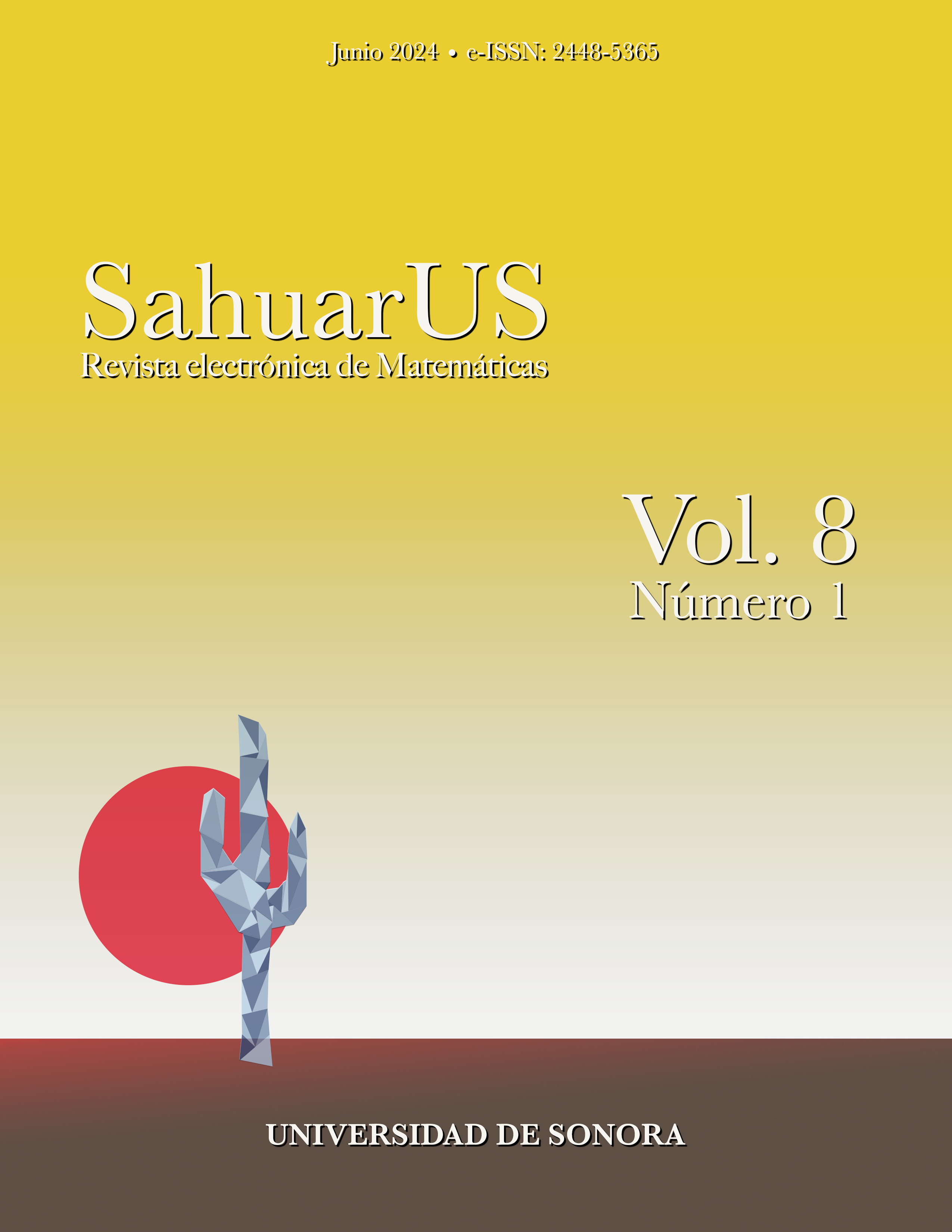Construcción de función como relación entre magnitudes variables: diseño de enseñanza desde la Teoría de APOE
DOI:
https://doi.org/10.36788/sah.v5i1.110Resumen
Se presenta un reporte de experiencia en el aula, como parte de un proyecto de intervención didáctica para favorecer la construcción del concepto de función a partir de la unión significados parciales. Se plantea construir este objeto matemático como la coordinación de varios significados, apoyados en el uso de diversas representaciones; de manera acorde al enfoque de Cálculo Cualitativo y en contraste con la marcada prioridad a la Teoría de Conjuntos y el uso de expresiones analíticas, teniendo en mente los conocimientos necesarios para alumnos de ingeniería y ciencias aplicadas. En este reporte, se analiza la problemática del aprendizaje de funciones en términos de la necesidad de coordinar significados parciales, a través del análisis de libros de texto y la implementación de un instrumento diagnóstico, se concluye la necesidad de una intervención didáctica que facilite la coordinación de distintos procesos mentales, en términos de la teoría APOE.
Descargas
Citas
Arnon, I., Cottrill, J., Dubinsky, E., Oktaç, A., Roa, S., Trigueros, M. & Weller, K. (2014). APOS Theory – A framework for research and curriculum development in mathematics education. Nueva York: Springer. DOI: https://doi.org/10.1007/978-1-4614-7966-6
Artigue, M., Douady, R., Moreno, L., & Gómez, P. (1995). La enseñanza de los principios del cálculo: problemas epistemológicos, cognitivos y didácticos. Ingeniería didáctica en educación matemática, 1, 97-140.
Ayres, F. (1971). Calculo Diferencial e Integral. Madrid. España: Artes gráficas EMA.
Breidenbach, D., Dubinsky, E., Hawks, J., & Nichols, D. (1992). Development of the process conception of function. Educational Studies in Mathematics, 23, 247–285. DOI: https://doi.org/10.1007/BF02309532
Carlson, M. P. (1998). A cross-sectional investigation of the development of the function concept. In A. H. Schoenfeld, J. Kaput, & E. Dubinsky (Eds.), Research in collegiate mathematics education III (pp. 114–162). Washington, DC: Mathematical Association of America DOI: https://doi.org/10.1090/cbmath/007/04
Dubinsky, E., & Wilson, R. T. (2013). High school students’ understanding of the function concept. The Journal of Mathematical Behavior, 32(1), 83-101. DOI: https://doi.org/10.1016/j.jmathb.2012.12.001
Duval, R. (1999). Semiosis y pensamiento humano: registros semióticos y aprendizajes intelectuales. Cali, Colombia: Universidad del valle. (Traducido por Myriam Vega Restrepo).
Edwards & Penny (1996). Calculo con geometría analítica. Madrid. España: Prentice Hall Hispanoamericana.
Goldenberg, P., Lewis P. & O’Keefe, J. (1992). Dynamic representation and the development of an understanding of function. En G. Harel & E. Dubinsky (Eds), The concept of Function: Aspects of Epistemology and Pedagogy (pp. 235-260). Washington: Mathematical Association of America.
Hamilton, A. G. (1982). Numbers, sets and axioms: the apparatus of mathematics. New York: Cambridge University Press. DOI: https://doi.org/10.1017/CBO9781139171618
Hughes-Hallet, D., Gleason, A., Lock, P., Flath. D., … Trash, J. (2004). Calculo aplicado. DF. Mexico; Compañía Editorial Continental.
Leithold, L. (1994). El cálculo. DF. Mexico: Oxford University Press
Leinhardt, G., Zaslavsky, O., & Stein, M. (1990). Functions, graphs and graphing: Tasks, learning and teaching. Review of Educational Research, 60(1), 1–64. Lovell, K. (1971). Some aspects of the growth of the concept of a function. In M. F. Rosskopf, L. P. Steffe, & S. Taback (Eds.), Piagetian cognitive development DOI: https://doi.org/10.3102/00346543060001001
Maharaj, A. (2010). An APOS Analysis of students’ understanding of the concept of a limit of a function. Pythagoras, 71, 41-52. DOI: https://doi.org/10.4102/pythagoras.v0i71.6
Markovitz, Z., Eylon, B., & Bruckheimer, M. (1986). Functions today and yesterday. For the Learning of Mathematics, 6(2), 18–24.
Parra Y. (2015). Significados pretendidos por el currículo de matemáticas chileno sobre la noción de función (Tesis de maestría no publicada). Universidad de los Lagos, Santiago de Chile.
Zandieh M, Ellis J. & Rasmussen C. (2017) Characterization of a unified notion of mathematical function: the case of high school function and linear transformation. Educational Studies in Mathematics, 95, 21–38. DOI: https://doi.org/10.1007/s10649-016-9737-0
Sierpinska, A. (1992). On understanding the notion of function. In G. Harel, & E. Dubinsky (Eds.), The concept of functions: Aspects of epistemology and pedagogy (pp. 25–28). United States: The Mathematical Association of America.
Stroup M. (2002). Understanding qualitative calculus: a structural synthesis of learning research, International Journal of Computers for Mathematical Learning, 7, 167–215. DOI: https://doi.org/10.1023/A:1021147132127
Swokowski, E. (1988). Calculo con geometría analítica. DF. México: Grupo Editorial Iberoamerica.
Thompson, P. W. (1994). Students, functions, and the undergraduate curriculum. In E. Dubinsky, A. H. Schoenfeld, & J. J. Kaput (Eds.), Research in collegiate mathematics education (pp. 21–44). Providence, RI: American Mathematical Society.
Vinner, S., & Dreyfus, T. (1989). Images and definitions for the concept of function. Journal for Research in Mathematics Education, 20(4), 356–366. DOI: https://doi.org/10.5951/jresematheduc.20.4.0356
Descargas
Publicado
Cómo citar
Número
Sección
Licencia
Los artículos publicados por Sahuarus. Revista Electrónica de Matemáticas se distribuye bajo una Licencia Creative Commons Atribución-NoComercial-SinDerivadas 4.0 Internacional, la cual permite la distribución y el uso del material publicado citando la fuente de la que proviene, prohibe la modificación y el uso con fines comerciales.







